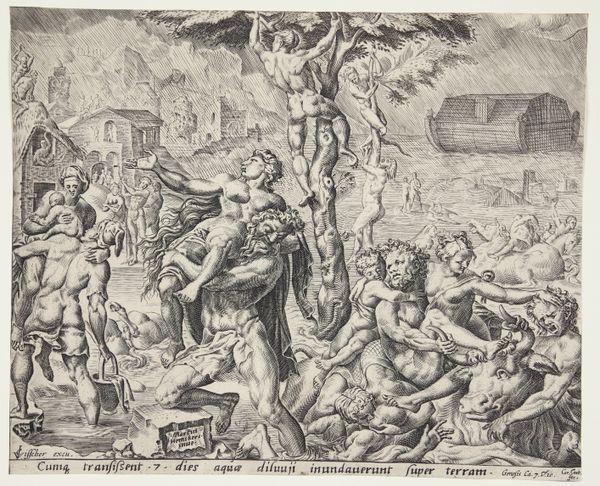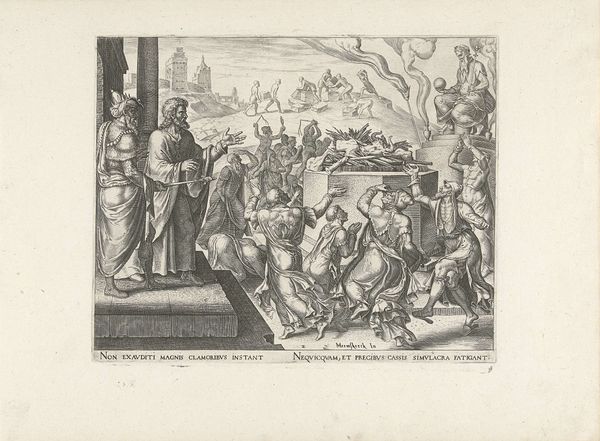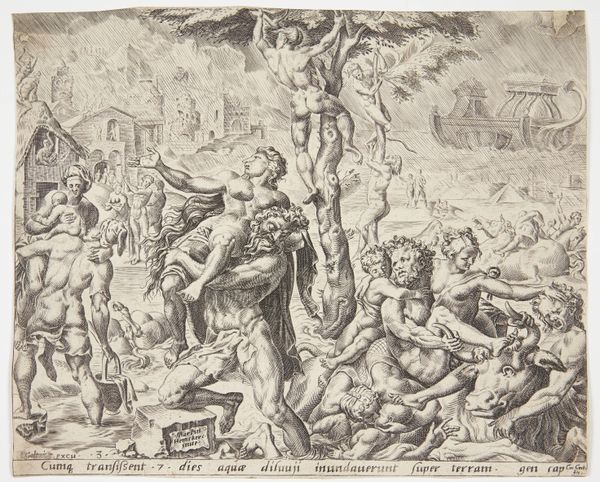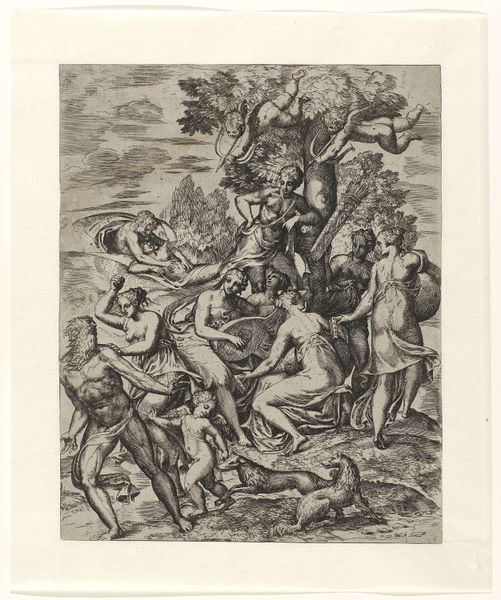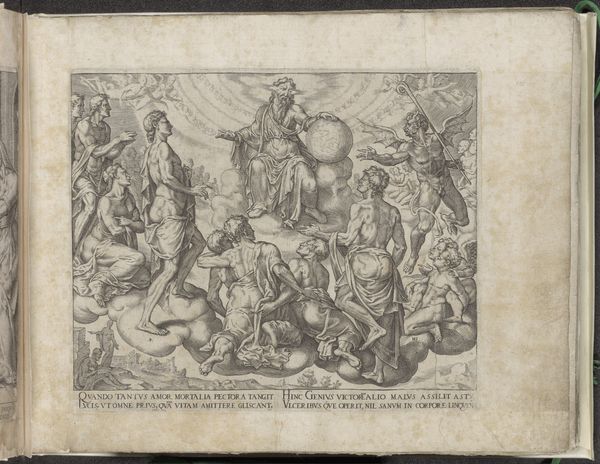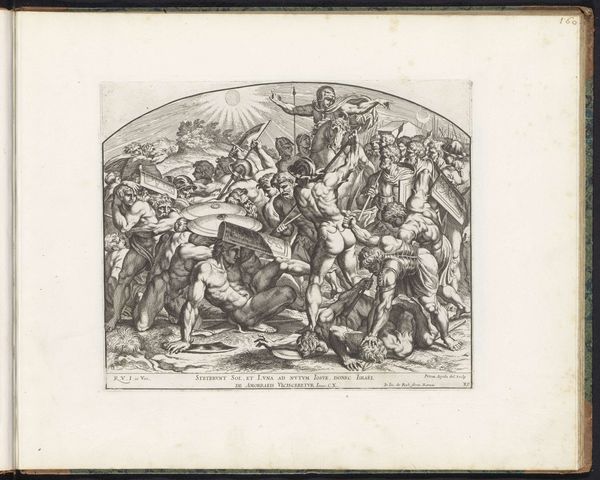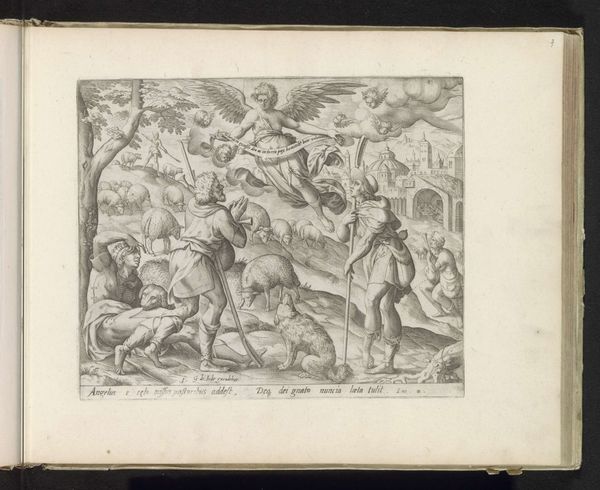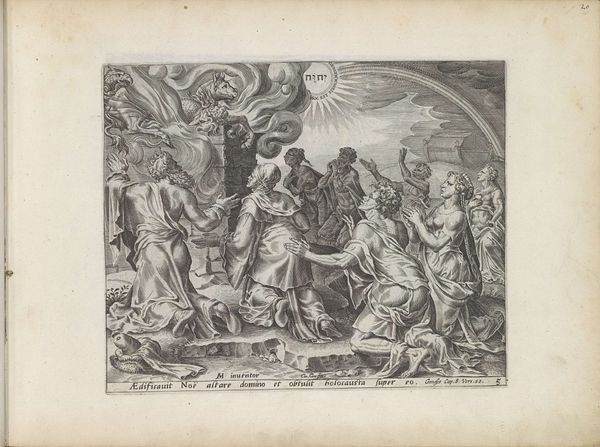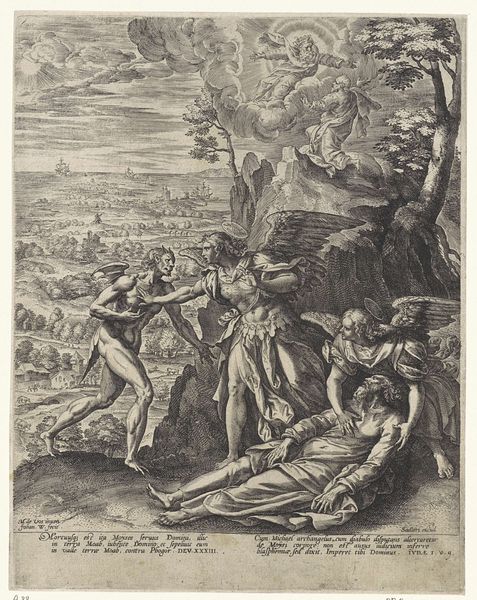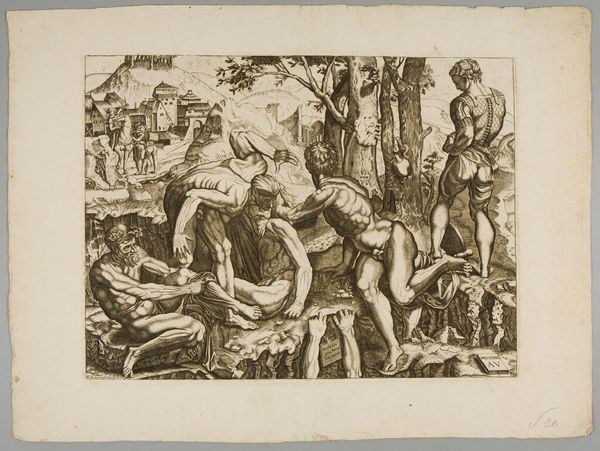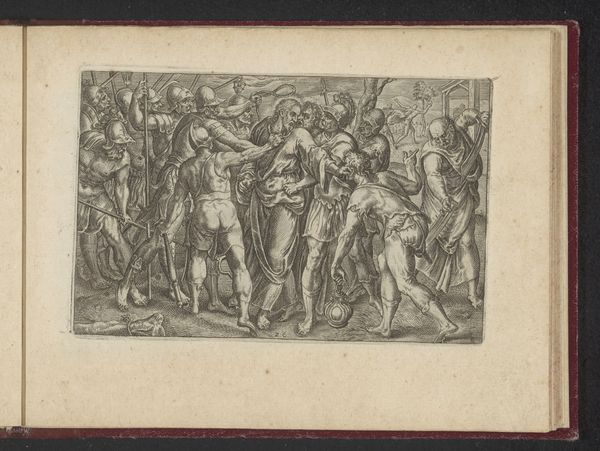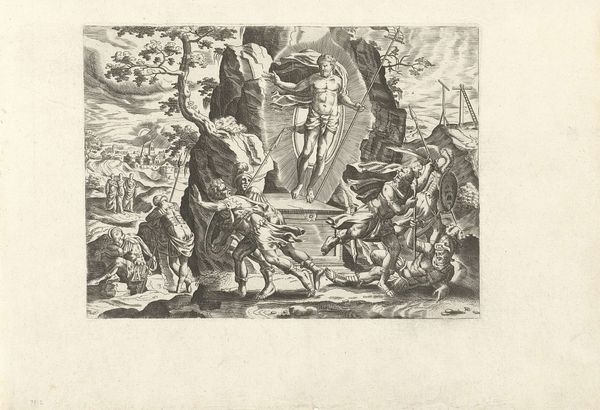
print, engraving
# print
#
landscape
#
figuration
#
history-painting
#
northern-renaissance
#
engraving
Dimensions: height 203 mm, width 247 mm
Copyright: Rijks Museum: Open Domain
Curator: This intense scene before us is "The Flood," an engraving from somewhere between 1558 and 1643, attributed to Cornelis Cort, residing here at the Rijksmuseum. My breath caught just looking at the chaos, like witnessing a fever dream rendered in precise lines. So much striving, and grasping. What's your first impression? Editor: My immediate reaction is how class plays out even in catastrophe. While some scramble up trees, clinging to literally the last branches of power, others are submerged, becoming a faceless mass swallowed by the deluge. The helplessness radiating here hits so hard, especially considering our current climate reality. Curator: It’s almost darkly comical how desperate the figures are, isn’t it? Like watching puppets dance on strings of fear. The composition itself, it’s as though the figures are packed together like sardines, no escape! Yet even amongst this horrifying tragedy, a sense of the artistic expression bursts through. Editor: I see this engraving and I immediately think of how myths of great floods—Noah's Ark being just one—function to reinforce social hierarchies. Notice how many are trying to ride atop beasts of burden—animals transformed into tools for self-preservation. What kind of theology turns its back so readily on non-human life? Curator: I never imagined the great flood would leave so little room for empathy. Still, isn't there a human core in there? What I love here, is the sheer emotional turmoil, rendered with such meticulous detail that it feels overwhelmingly tangible; one could almost drown. The level of anguish etched in their faces! Editor: Perhaps that supposed core reflects something uglier. These Northern Renaissance depictions are always interesting in how they frame these events: as exceptional punishments delivered from on high. And where's the reflection on the human behavior, systems, and power structures that invited that "divine wrath?" I look and I see judgement without justice, spectacle without self-awareness. Curator: Maybe Cort asks us not to ponder what was deserved or underserved, but how tragedy erases the boundaries between saint and sinner, the deserving and undeserving. Maybe here the tragedy truly becomes equalizing! Editor: If that erasure is what touches you most deeply, perhaps we can ask ourselves why disaster is sometimes the only occasion we can imagine a kind of twisted human solidarity, carved into the face of an engraving. Curator: Well said. This tiny window into Cornelis Cort's historical rendering will be forever marked by both our own points of view now, as well as the many possible views to come.
Comments
No comments
Be the first to comment and join the conversation on the ultimate creative platform.

